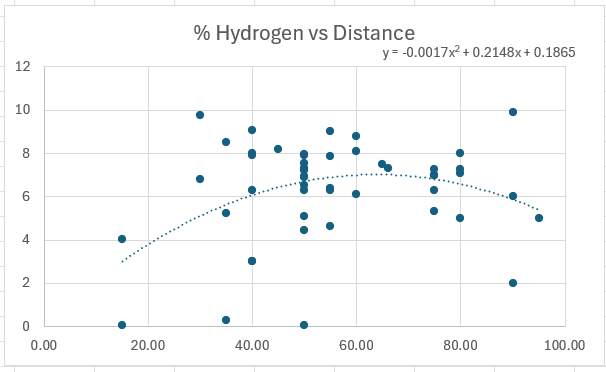Use the Stability First method for predicting chemical equations
- Brennan Koch
- Feb 23, 2024
- 4 min read
There is an answer in chemistry to almost every “why” question. To become more stable.
Why does nitrogen make a diatomic element? To become more stable.
Why does a solid form in that reaction? To become more stable.
Why does heat come out of that crystalizing hand warmer? To become more stable.
And then you have your lower level students start predicting the products of reactions. They start combining things that shouldn’t combine. Mixing things that shouldn’t mix. Separating things that shouldn’t be alone. It can be frustrating. This year, from the nomenclature unit through predicting reactions, I have started using a new method. Everything must be stable. Write a chemical formula, check if it’s stable. Does this single displacement reaction occur? Check if its stable. Write the products of this double displacement, check if they are stable.
Below, I will outline common errors from the basic reaction types and how to help kids see if they are stable. (The reaction, not the kid. We already know the answer to the kid.)
Combination or Synthesis Reactions
The driving force behind synthesis reactions is the stability of bonds. Sell that idea hard when teaching it. You likely just finished a unit for writing stable formulas, and this will be no different.
The number one error is to bring the subscript of a diatomic element over from the reactants. Here is an example.
Al + O2 → Al2O3
Kids will just slap those elements together and call it a day. Go back and reinforce the concept. Why did aluminum and oxygen bond? To become more stable. How would they get stable with their charges? Not like they had it written. So then they start looking at balancing charges. You can check out my method for that in this blog post.
Once they have the compound stable, then they can go about the business of balancing the reaction. Stability first, balance second. It’s a mantra.

Decomposition Reactions
First, a stimulus is usually given to break up the compound, otherwise it wouldn’t have formed in the first place. But since the breakup did happen, help the elements become the most stable version of themselves.
The biggest error is not knowing which elements are diatomic. In our class we call them “The Seven”. Start at #7, make the shape of a 7, and there are 7 (remember the hydrogen!). So the standard becomes if an element is alone and is part of The Seven then it gets a subscript of 2. The element has to meet BOTH of those conditions. Must be alone. Must be part of The Seven. This help prevent kids from writing a subscript of 2 within a compound like MgO. The O is not alone. Therefore, it doesn’t get a subscript of 2.
Single Displacement Reactions
There are two big errors that occur in single displacement reactions. Not knowing if a reaction will take place and combining the wrong elements if a reaction does take place. Even in my lower chemistry class I teach them about the activity series of metals. While their understanding is rudimentary, they can pretty quickly use the series of metals to determine if a single displacement reaction will take place. I teach the reaction types in terms of a chemical dance, which many of you do. In this dance, a couple breaks up, and the girl hooks up with a new guy. I describe the activity series as a list of “Relative Hotness of Guys”. On that list, a girl (the anion) isn’t going to break up with her guy to go date someone uglier (lower on the activity series). Therefore, at the beginning of a single displacement reaction, we always check to see if the single guy is hotter than the one she’s got. Why? Stability. (Yes, I do connect it stability and ease of oxidation. And yes, MOST kids put ease of oxidation on their tests. Most…)
The second error in single displacement is combining the wrong elements. Again. Stability. Why would a metal that makes a cation want to be attracted to a metal that is also a cation? They wouldn’t. It’s not stable. Cations bond with anions. Why? Stability. Make the products stable and you will be right.
Double Displacement Reactions
In order to determine if a double displacement reaction will take place, we have to check for added stability. At the beginning of the chemical dance, both couples break up (are aqueous). In order for something cool to happen, a new couple that is more stable (a solid, liquid or gas) needs to form. I have the students use solubility rules to predict these outcomes. (You can download the solubility rules here.)
I explain it like this. We need a story to happen at the dance. Is this a very cool story? Once upon a time two couples went to the dance. While on the way to the dance they broke up. At the end of the dance, they were still broke up. The end. Is that a cool story? Not really. If something is going to happen to carry the story, it better make some increased stability. Like a new couple.
There are other reaction types, and yes, they seek stability too. But in the first teaching of chemical reactions, your students will become more stable if you teach them to be constantly on the lookout for stability.
When your students are more stable, you are more stable.
Why should you teach the stability first method? To become more stable.
Interested in trying something new in your class? Try Up & Atom to introduce the mole concept. The game can be used multiple times in the unit to help students get a better understanding of the conversions among moles, grams, and atoms.





Comments